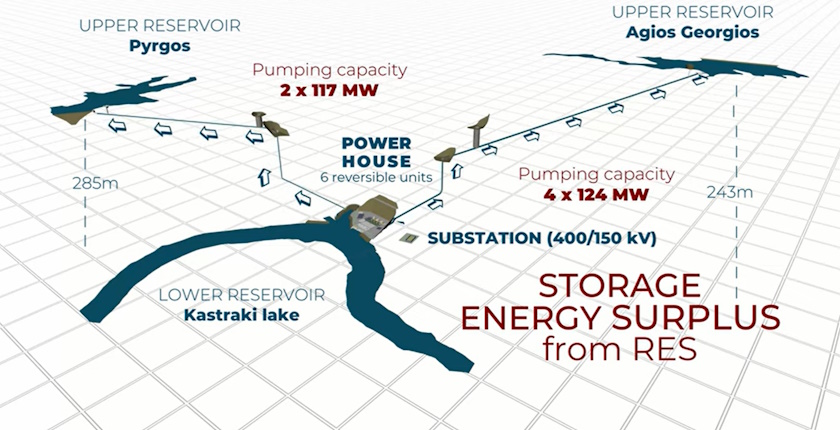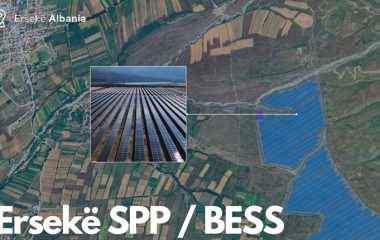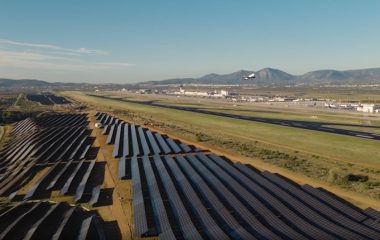
Photo: Terna Energy / YouTube
Austria-based Andritz Group said it would design, manufacture and install six reversible pump-turbine generators for Greek company Terna within its Amfilochia pumped storage hydropower project. The complex is set to consist of two plants with separate upper reservoirs.
In its energy transition, Greece relies substantially on energy storage projects. While pioneering auctions for subsidies for battery systems on the European level, the country is also preparing some major pumped storage hydropower projects. The largest one, Amfilochia, is under construction and should be completed by the end of 2025.
Terna, construction branch of GEK Terna Group, awarded the contract to Andritz to supply electromechanical equipment. Amfilochia is located in Aetolia-Acarnania in Western Greece.
Once in commercial operation, the power plant will have a total capacity of 680 MW in generation mode and 730 MW for pumping. Total annual output is estimated at 816 GWh. Greece has backed Terna Energy with EUR 250 million, consisting of a grant and annual payments. A part of the state aid was approved via the European Union’s Recovery and Resilience Facility.
Pumped storage plants serve as grid batteries
Andritz, based in Graz, Austria, said its task is to design, manufacture and supervise the installation of six reversible pump-turbine generator units and commissioning theme, along with associated equipment, governors, excitation and protection system, main inlet valves, draft tube gates as well as digital services. The company didn’t reveal the financial details.
Water is pumped to the upper reservoir using excess electricity, usually from renewables, and released to generate energy again when it’s the other way around
The advanced pumped storage plant will act as a green battery by balancing fluctuations in power generation from wind and solar plants, thus ensuring the secure and stable operation of the Greek power grid, it said.
Water is pumped to the upper reservoir using excess electricity, when production exceeds demand. When it’s the other way around, stored water is released to the lower reservoir to generate energy again.
Given the global increase in energy demand and the growing share of volatile renewable energy sources, economical solutions for storing large amounts of energy are essential, Andritz explained. Pumped storage hydropower plants are still the only conventional technology.
Amfilochia investment amounts to over EUR 600 million
The Amfilochia project consists of two systems with separate upper reservoirs. The joint common lower reservoir, Kastraki lake, was built in 1960. It is owned by state-controlled Public Power Corp. (PPC).
The Agios Georgios plant is envisaged with four reversible turbines with 460 MW in total in turbine mode and 496 MW in pumping mode. The other part, Pyrgos, also a semi-outdoor facility, would have two. The tunnels are 2,800 and 1,600 meters long, respectively.
Amfilochia has the status of a project of common interest in the EU since October 2013.
Almost all countries in Southeastern Europe are developing pumped storage hydropower projects
According to Terna Energy’s website, the investment amounts to over EUR 600 million. The company is also developing a hybrid power plant in Crete including a pumped storage hydropower plant.
Andritz Group is active in over 80 countries in the sectors of pulp and paper, metals, hydropower, and environment and energy. Andritz Hydropower has installed 470 GW so far.
Other countries in the region tracked by Balkan Green Energy News have mostly accelerated work on pumped storage investments over the last couple of years. However, North Macedonia has just returned the Čebren project to the drawing board for the 14th time.

















Be the first one to comment on this article.